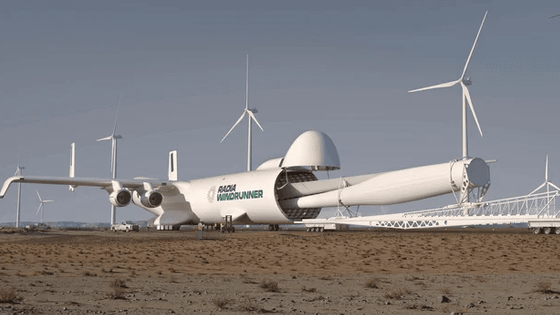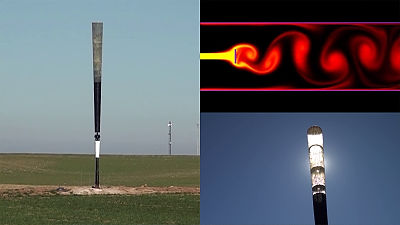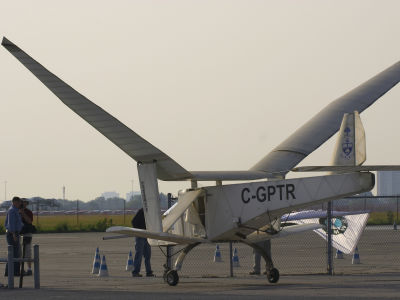Construction begins on the world's largest plane, 'Windrunner,' to transport 'wind turbine blades'

In many regions, land-based wind turbine blades can only be manufactured to a maximum length of around 70 meters. This limit is not due to engineering or physical limitations, but rather to transportation constraints. Blades longer than this length cannot fit through tunnels or navigate curves in rail and road systems. To overcome these limitations, the world's largest aircraft capable of transporting large blades was built.
Wind Turbine Blade Transport by Giant Aircraft - IEEE Spectrum
The Windrunner, an aircraft being developed by Radia, is approximately 108 meters long, 60% longer than the largest aircraft currently in existence, and has 12 times the cargo space of a Boeing 747. It will carry just one thing: a giant blade.
The WindRunner can carry two blades of up to 95 meters or one blade of up to 105 meters, and can land on a temporary runway or other facility at the wind farm to transport the blades directly.

'Manufacturers have the know-how to build even larger blades, but they're frustrated because they can't transport them by land,' says Radia CEO Mark Lundstrom. For example, in parts of the United States and Europe, blades that are too large can't pass under highway overpasses, and in developing countries with many unpaved roads, they can't withstand the vibrations.
If the turbine is to be installed on the sea, the blades can be manufactured on the coast and transported by ship. In fact, the largest blades for offshore wind power generation are said to be over 250 meters long.
CEO Lundstrom believes that air transport will be an effective solution for land-based wind power plants, where transportation has been a major bottleneck.

Although wind turbine blades are massive, they're not dense, making the Windrunner relatively light. It's designed for takeoff and landing on unpaved roads, and even short takeoffs are no problem. Since there are no passengers aside from the cockpit, minimal pressurization is required.

When asked whether there's any benefit to making the blades bigger in the first place, MIT wind expert Michael Howland explained, 'Power generation capacity increases as the cube of the wind speed passing through and the square of the diameter of the circle made by the rotating blade. This means that while larger blades are more expensive to manufacture, the power generation capacity more than compensates for this. This is why blade size has steadily increased over the years.'
In conjunction with the production of Windrunner, Radia has launched a business division to build new wind farms both domestically and overseas.
Related Posts:
in Posted by log1p_kr







